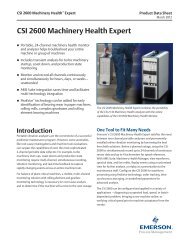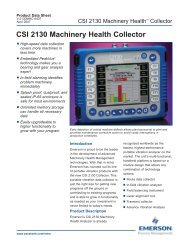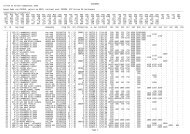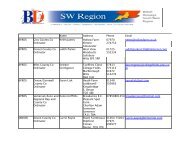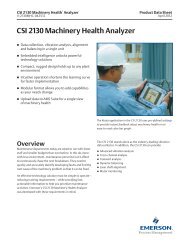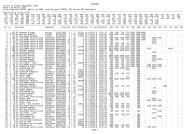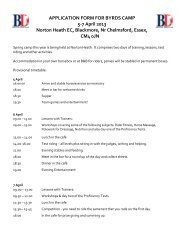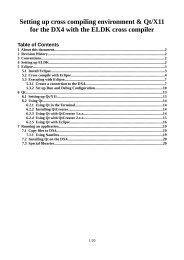Download Publication - The Nuffield Trust
Download Publication - The Nuffield Trust
Download Publication - The Nuffield Trust
Create successful ePaper yourself
Turn your PDF publications into a flip-book with our unique Google optimized e-Paper software.
January 2011others, 2004; Gleave, 2009; Ham, 2010a). <strong>The</strong>y have shownthat it is possible to build integrated care systems with a strongprimary care base that place a major emphasis on quality,prevention and minimising use of expensive hospital-basedcare. <strong>The</strong>se organisations are still relatively rare and othermodels are being explored for funders to achieve the sameresults, for example ‘accountable care organisations’ wherehealthcare organisations and medical groups cooperate to takeon a fixed budget with which to commission outcome-basedcare for a population (Orszag and Emanuel, 2010).<strong>The</strong> allocation of fixed budgets to medical groups as analternative to fee-for-service practice is not a new idea(Shortell and Casalino, 2008). In a few areas in the US,including California, groups have been using fixed budgetsto provide primary and specialist care for more than twodecades. It is their experience of assuming and managingthese budgets, together with the associated financial andservice risk, that is of interest as potential learning for theNHS (Ham, 2010b; Casalino, forthcoming).Medical groups and independentpractitioner associations<strong>The</strong>re are two main variants of these medical groups in theUS: medical groups and independent practitioner associationsBox 1: Two kinds of medical groupMedical groups: <strong>The</strong>se groups employ their memberdoctors, who typically work in clinics owned by themedical group, or as hospitalists, working for the groupin local hospitals. Doctors – many of them specialists –are salaried and usually receive a bonus for providinghigh-quality care in line with agreed standards andguidelines. <strong>The</strong>se groups have some similarities to largeEnglish group practices, although US medical groupsgenerally include GPs and specialists.Independent practitioner associations (IPAs): IPAsformed as corporate structures through whichphysicians could come together to negotiate andadminister health maintenance organisation (HMO)contracts on behalf of their members (Robinson andCasalino, 1996). IPAs are networks of doctors whocontinue to own and run their own clinics, but who joinan IPA to get access to contracts while also obtainingadministrative and technical support.Many organisations – including the case studiesoutlined in this document – combine features of amedical group with an IPA model.(IPAs) (see Box 1). <strong>The</strong>se are generally multi-specialty,combining primary care doctors with specialists.Most of these groups were formed from the late 1980s afterlegal changes allowed them access to the ‘managed caremovement’ in the US. Health maintenance organisations(HMOs) were generally owned by insurance companiesthat used the techniques of managed care to control costs.<strong>The</strong>se included using primary care as a gate-keeper tospecialist care, and trying to reduce the use of unnecessaryhospital services by intensive management of patients withchronic illness and complex needs.In many areas, HMOs coordinated patients’ carethemselves and gave capitated budgets to individualprimary care doctors for general practice services. But inother areas, doctors came together in groups and IPAs tocontract with the HMOs and take on responsibility formanaging and coordinating care across a wider range ofservices. Up to 2,000 of these groups took root across theUS in the late 1980s. However, many failed to managerisk-bearing budgets successfully (Casalino, forthcoming).In California, medical groups were particularly prevalentand some have proved to be long-lived. This peculiarity ofCalifornia is perhaps due to the success of KaiserPermanente and its associated Medical Group, which actedas a powerful stimulant for the HMO industry in California(Robinson, 2001). As large insurers mounted a competitiveresponse to Kaiser, they sought out multi-specialty medicalgroups rather than building networks of small practicesthemselves. Offering fixed budgets to these groups, theytransferred insurance risk by requiring them to manage arange of health care services within an agreed budget, andto specified quality standards.In the 1980s, as these groups were forming, the financialenvironment was favourable and they were often able tonegotiate progressively larger annual budgets withinsurers, while the public was initially tolerant of thedrive to control costs through the techniques of managedcare (Robinson, 2001). During this time, many of theCalifornia groups proved that they could reducehospital admissions amongst their patients to wellbelow national averages (Robinson and Casalino, 1995).A leaner period followed in the 1990s, as growth inannual budgets flattened or declined, driven partly byconsumers and employers losing their appetite formanaged care (perceiving it as a way of reducingchoice and limiting access to services). Some medicalgroups and IPAs went bankrupt, others merged intolarger groups and many abandoned risk contractingwww.nuffieldtrust.org.uk/publications 3






